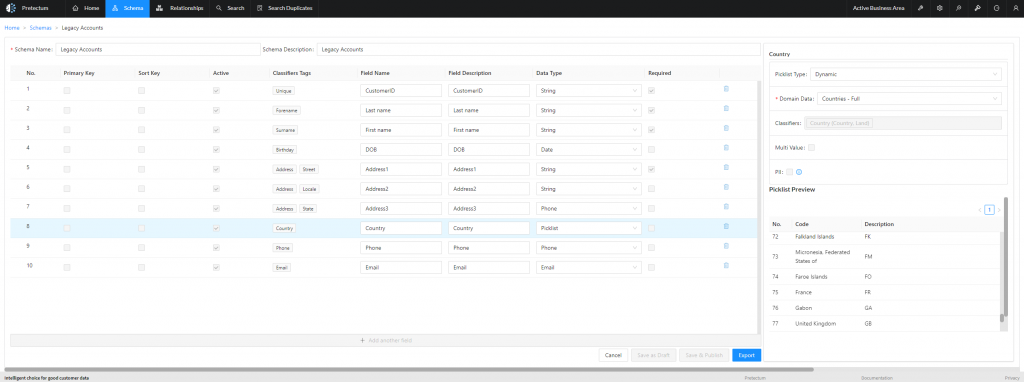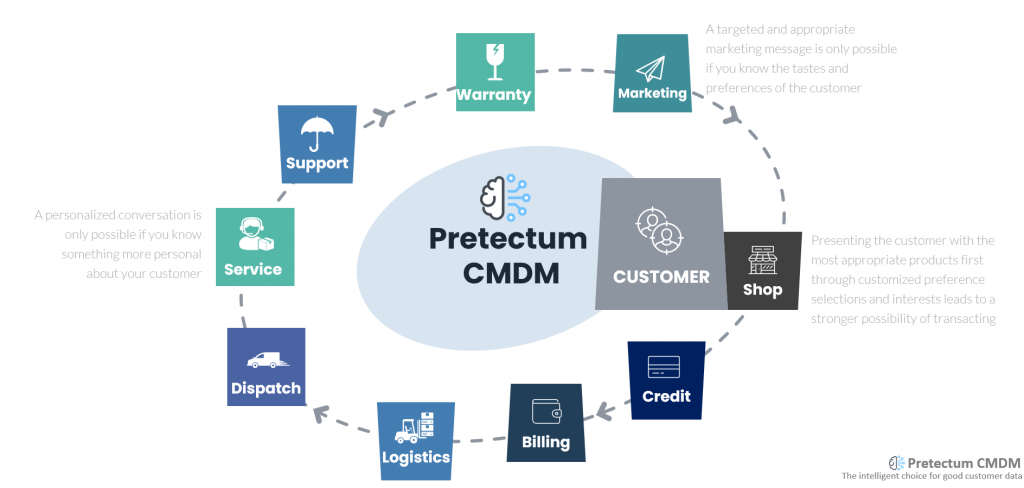Today’s businesses are navigating a sea of data and customer interactions while seeking ways to not only understand their clientele better but also to engage with them meaningfully.
While Customer Relationship Management (CRM) systems have gained immense traction in recent years, there’s a paradigm shift on the horizon – the rise of Customer Master Data Management (CMDM) as complementary at the very least.
Understanding the nuances of CMDM and its transformative power is the key to reshaping the way your organization approaches valued customer relationships.

At its core, CMDM transcends the boundaries of traditional CRM systems. It’s not merely about managing customer interactions; it’s about mastering customer data comprehensively.
In essence, CMDM focuses on creating a centralized, accurate, and up-to-date repository of customer information. Unlike CRM, which often compartmentalizes data into sales, marketing, and customer service silos, CMDM integrates data from diverse sources and departments, providing a unified view of each customer.

One of the fundamental differentiators of CMDM from CRM lies in its holistic approach to customer data.
While CRM systems excel at managing customer interactions, CMDM delves deeper, harmonizing data from various touchpoints such as online and offline purchases, social media interactions, customer support inquiries, and more.
This comprehensive data integration allows businesses to craft a 360-degree view of their customers, enabling a nuanced understanding of their preferences, behaviors, and needs.
Imagine a scenario where a customer interacts with a business across multiple channels – website, mobile app, social media, and in-store.
With CMDM, all these interactions are seamlessly amalgamated into a singular customer profile. This unified profile serves as the foundation for personalized marketing strategies, enabling businesses to deliver tailored experiences that resonate with individual customers.

Moreover, CMDM introduces advanced analytical capabilities that go beyond CRM‘s scope. By leveraging sophisticated algorithms and machine learning, CMDM mines vast datasets to extract actionable insights. These insights empower businesses to anticipate customer behavior, identify emerging trends, and forecast market demands accurately.
In essence, CMDM equips businesses with analytics, analytics that could enable them to stay ahead of the curve and proactively meet customer expectations.
Another pivotal aspect where CMDM outshines CRM is its scalability and flexibility.
Traditional CRM systems often struggle when faced with the exponential growth of customer data. CMDM, on the other hand, is designed to handle large volumes of data effortlessly. This scalability ensures that businesses can seamlessly expand their customer base without compromising data accuracy or system performance.

Furthermore, CMDM enhances data governance and compliance, addressing a critical concern for businesses in today’s data-driven world. By establishing stringent data quality standards and ensuring regulatory compliance, CMDM instills confidence in businesses, assuring them that their customer data is not only accurate but also secure.
Additionally, CMDM fosters interoperability, enabling seamless integration with other business-critical systems such as Enterprise Resource Planning (ERP) and Supply Chain Management (SCM). This interoperability streamlines operations, facilitating real-time data exchange between departments and optimizing business processes.
In the realm of personalization, CMDM takes customization to unprecedented heights. While CRM systems offer a degree of personalization, CMDM elevates this concept by supporting data for marketing messages, product recommendations, and service offerings in real-time.
This dynamic personalization, grounded in comprehensive customer data, drives toward engendering a sense of loyalty and connection, fostering long-term relationships between businesses and their customers.
One of the most compelling aspects of CMDM is its ability to drive innovation.
With the power of artificial intelligence and machine learning, CMDM enables businesses to explore uncharted territories. From predictive customer behavior analysis to intelligent product recommendations, CMDM opens new avenues for innovation, empowering businesses to revolutionize their offerings and stay ahead in competitive markets.
While CRM systems have played a pivotal role in enhancing customer relationships, the advent of CMDM marks a transformative shift. CMDM’s ability to master customer data, provide a unified view of customers, offer analytics, ensure scalability, enhance personalization, foster interoperability, and drive innovation distinguishes it as a compelling choice for businesses operating in today’s data-driven landscape.
As businesses evolve and customer expectations continue to soar, embracing CMDM is not merely a strategic choice but a necessity.
By investing in CMDM, businesses can unlock unparalleled potential, forging enduring connections with their customers and charting a path toward sustained growth and success.
The era of CMDM beckons – a future where businesses don’t just manage customer relationships; they master them, propelling their ventures to unprecedented heights of excellence and customer satisfaction.


